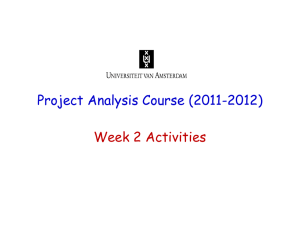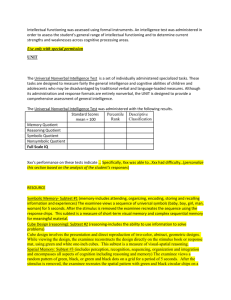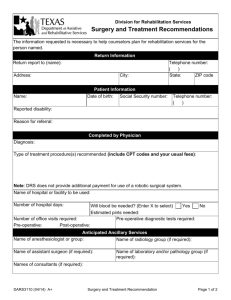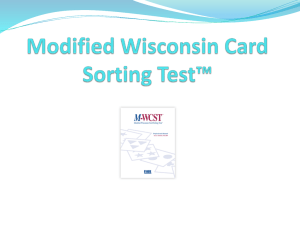ACLS Provider Skills Verification
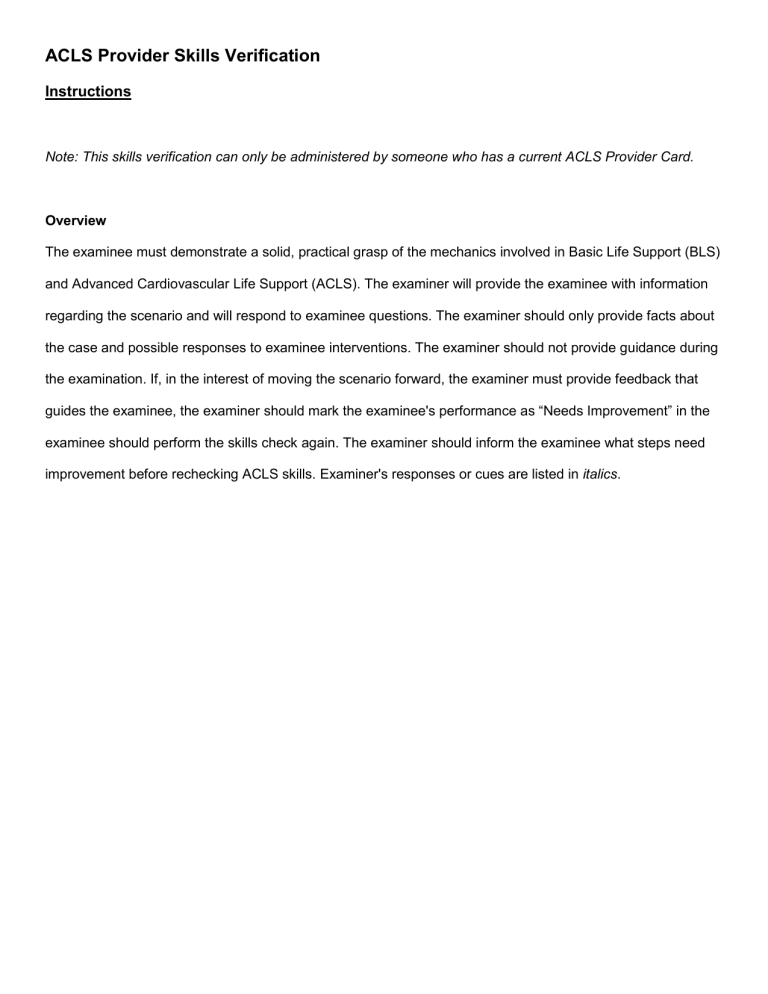
ACLS Provider Skills Verification
Instructions
Note: This skills verification can only be administered by someone who has a current ACLS Provider Card.
Overview
The examinee must demonstrate a solid, practical grasp of the mechanics involved in Basic Life Support (BLS) and Advanced Cardiovascular Life Support (ACLS). The examiner will provide the examinee with information regarding the scenario and will respond to examinee questions. The examiner should only provide facts about the case and possible responses to examinee interventions. The examiner should not provide guidance during the examination. If, in the interest of moving the scenario forward, the examiner must provide feedback that guides the examinee, the examiner should mark the examinee's performance as “Needs Improvement” in the examinee should perform the skills check again. The examiner should inform the examinee what steps need improvement before rechecking ACLS skills. Examiner's responses or cues are listed in italics .
BLS Scenario
The examinee witnesses an adult victim collapse at an airport.
The examinee should perform a BLS survey
1. Secure the scene ( the scene is secure )
2. Assess the victim ( non-responsive, not breathing, no pulse )
3. Activate EMS ( a bystander will call 911 )
4. Acquire defibrillator ( a bystander will retrieve an AED )
5. Start high-quality CPR ( ask examinee to demonstrate chest compressions and respirations )
6. The AED arrives ( the rhythm is shockable )
7. The examinee should clear patient before shock ( the victim regains consciousness )
8. EMS arrives ( end of scenario )
BLS Skills Verification Checklist
Skill Tested
Secure the scene
Assess the victim (Responsive? Breathing? Pulse?)
Activate EMS (This can precede breathing and pulse checks)
Send bystander for defibrillator
Opens airway appropriately
Administers ventilations appropriately and adequately
Arms are straight and above victim during chest compressions
Chest is compressed to an adequate depth
Delivers at least 100 chest compressions per minute
Chest fully rebounds after each compression
AED is placed properly
Everyone is clear of the victim before shock is given
Shock is administered for a shockable rhythm
Examinee stays with patient until EMS arrives
Pass Needs
Improvement
ACLS Scenario – Megacode 1 – Tachyarrhythmia
You are caring for a patient on a telemetry floor. As you are speaking to the 68 year-old woman, she says that she feels lightheaded. Her heart monitor shows a rate of 158 bpm.
The examinee should perform an ACLS survey
1. Assess the victim ’s airway ( the airway is patent )
2. Assess the victim’s breathing ( she is breathing faster than normal )
3. Assess the victim’s circulation ( her heart rate is faster than normal; her nurse arrives; BP is 126/76 )
4. Ask the nurse to retrieve a crash cart/heart monitor/defibrillator ( it arrives)
5. (Provide supraventricular tachycardia ECG tracing; Appendix A)
6. Examinee recognizes supraventricular tachycardia
7. Examinee performs vagal maneuver ( no change in rhythm )
8. Examinee gives 6 mg of adenosine ( no change in rhythm )
9. Examinee gives 12 mg of adenosine ( no change in rhythm )
10. Examinee provides synchronized cardioversion ( patient loses consciousness )
The examinee should perform a BLS survey
11. Assess the victim’s pulse (no pulse)
12. (Provide ventricular tachycardia ECG tracing; Appendix B)
13. Examinee should provide unsynchronized cardioversion ( patient tries to speak )
14. (Provide normal sinus rhythm ECG tracing; Appendix C)
15. Ask examine to describe ROSC algorithm ( end of scenario )
ACLS Skills Verification Checklist – Megacode 1
Skill Tested
Performs ACLS survey (airway, breathing, circulation)
Obtains crash cart/heart monitor/defibrillator
Recognizes supraventricular tachycardia
Performs vagal maneuver
Gives 6 mg of adenosine
Gives 12 mg of adenosine
Provides synchronized cardioversion
Perform a BLS survey ( circulation, activate code, breathing, circulation)
NOTE: it is acceptable to move directly to next step after finding no pulse.
Provides unsynchronized cardioversion
Describes ROSC (optimize ventilation and oxygenation, check BP, treat hypotension, neuro check, possible MI?, move to ICU)
NOTE: It is acceptable for examinee to name priorities e.g. respiration, circulation, neuro,
ICU
Pass Needs
Improvement
ACLS Scenario – Megacode 2 - Respiratory Arrest
“Code blue, adult. Code blue, adult. You respond to the overhead page. You enter the room of a man who was admitted for bacterial pneumonia and COPD exacerbation. The patient and his nurse are in the room. The patient can be heard wheezing and coughing as you enter the room.
The examinee should perform an ACLS survey
1. Assess airway and breathing ( wheezes, no stridor, diffuse crackles, decreased lung sounds )
2. ( Patient oxygenation is at 91%)
3. Assess circulation ( tachycardic )
4. It is acceptable, but not mandatory, for the examinee to provide an IV diuretic, such as furosemide
5. Provides supplemental oxygen to keep oxygen saturation at or above 94%
6. (patient is gasping)
7. Initiates rescue breathing
8. (Patient oxygenation is at 88%)
9. Examinee announces the need for an advanced airway ( ICU personnel are on their way )
10. Examinee continues to provide rescue breathing until ICU personnel arrive
11. ICU personnel arrive ( end of scenario )
ACLS Skills Verification Checklist
– Megacode 2
Skill Tested
Assess airway and breathing
Assess circulation
Provides supplemental oxygen
Titrate oxygen to 94% or higher (examiner can ask for appropriate O2 level)
Initiates rescue breathing
Recognizes need for advanced airway
Provide rescue breathing until help arrives
Pass Needs
Improvement
ACLS Scenario – Megacode 3 - Bradycardia
You are called by nursing to the room of a woman who felt dizzy an hour ago. The nurse reports her blood pressure is difficult to assess with an automated cuff and systolic blood pressure has been registering in the
80s. The patient is conscious.
The examinee should perform an ACLS survey
1. Assess airway and breathing ( wheezes, no stridor, diffuse crackles, decreased lung sounds )
2. ( Patient oxygenation is at 91%)
3. Assess circulation ( tachycardic )
4. Provides supplemental oxygen to keep oxygen saturation at or above 94%
5.
Is a cardiac monitor placed?
6.
Is there an IV present and patent?
7. (patient loses consciousness; monitor shows ventricular fibrillation
)
8. If defibrillator is provided, does the learner administer a shock? If not, does he/she call for one and start
CPR?
9. The monitor now shows asystole. Are shocks stopped in favor or drug administration?
10. Is the correct dose of epinephrine given?
11. CPR is resumed immediately epinephrine is given?
12. ICU personnel arrive ( end of scenario )
Critical Skill
SYMPTOMATIC BRADYCARDIA
TEAM LEADER (or provider) correctly identifies symptomatic bradycardia?
Patient placed on supplemental oxygen?
Is a cardiac monitor placed?
Provider checks that IV is present and functional? (Or places IV)
TEAM LEADER (or provider) announces correct dose of atropine?
VENTRICULAR FIBRILLATION
TEAM LEADER (or provider) correctly identifies ventricular fibrillation?
Is the defibrillator obtained and properly placed?
TEAM LEADER announces all clear before shock?
CPR is resumed immediately after shock?
Does the TEAM LEADER ensure that CPR is High Quality?
Does CPR continue for two minutes?
ASYSTOLE
TEAM LEADER (or provider) correctly identifies asystole?
Are shocks stopped in favor or drug administration?
Is the correct dose of epinephrine given?
CPR is resumed immediately epinephrine is given?
TEAM LEADER (or provider) asks if waveform capnography is available
TEAM LEADER (or provider) considers causes of asystole
Yes No
The EXAMINER holds a valid and current ACLS Provider Card and confirms that the EXAMINEE has adequat day ely performed all of the skills listed above in accordance with current ACLS guidelines.
Date ______________________
EXAMINER ( Full Name ) ______________________ EXAMINER ( Signature ) ________________________
EXAMINEE ( Full Name ) ______________________ EXAMINEE ( Signature ) ________________________


